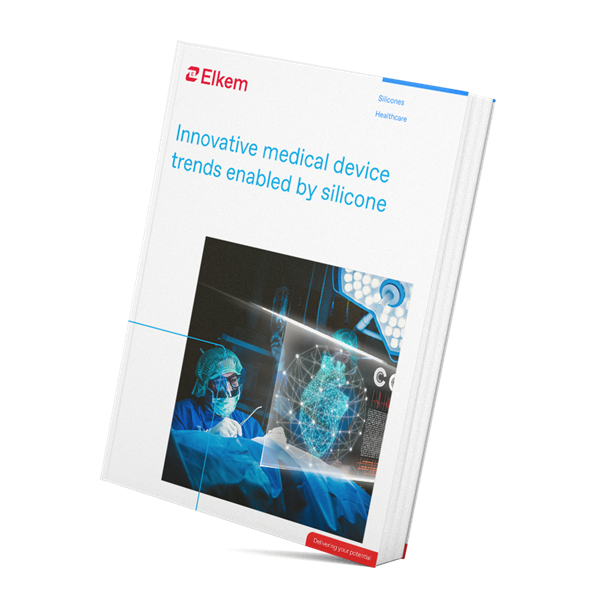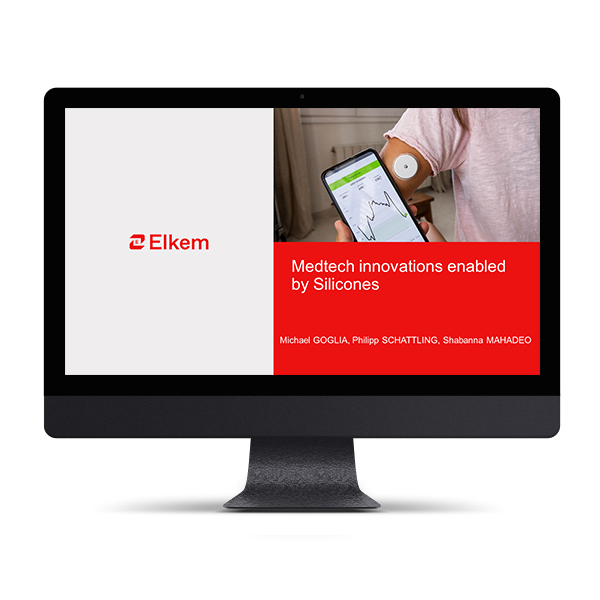- Magazine
- Healthcare
- Silicones in critical care: Six life-sustaining applications for medical-grade silicone
Silicones in critical care: Six life-sustaining applications for medical-grade silicone
Medical-grade silicone is making a difference to patient comfort and safety across every area of healthcare, including these six lifesaving and life-sustaining applications.
In 2021, there were more than 34 million hospital admissions in the United States alone. As the world’s population grows and healthcare systems develop, the global market for medical equipment is reaching astronomical scales. In the US, the cardiovascular device market took $26,140 million of revenue in 2023, according to GlobalData. Orthopedics claimed the second largest market share at $23,367 million, closely followed by Hospital Supplies, General Surgery and Wound Care Management.
When it comes to designing new devices, there is an important place for medical-grade silicone materials across virtually all med tech fields, including prosthetics, dental, patient monitoring, and wound care management. There are many reasons why silicone has become a staple for medical device companies, including its ease of processing and cost-effectiveness. Most importantly, silicones are making a difference to the comfort and safety of dangerously ill patients.
In the acute care setting, medical-grade liquid silicone rubbers (LSRs) and high-consistency rubbers (HCRs) play an important role in breathing masks, catheters, and intravenous infusion therapy. LSRs, HCRs, and silicone adhesives frequently feature in small implantable devices. Meanwhile, many of the tools and apparatus used to successfully complete surgical procedures have some silicone component within them. Take a scalpel, for instance, which can have a silicone handle to allow for better grip during ultra-precise procedures as well as a lubricious silicone oil coating on the cutting surface to enable a cleaner incision.
Medical-grade silicone is everywhere in healthcare, from simple valves to complex neurostimulation devices. Here, we consider six important applications for silicone in lifesaving and life-sustaining devices.
Intravenous infusions
Intravenous infusion systems administer blood, fluids, nutrients, and medicines directly into the patient’s bloodstream. Needleless valves, primarily consisting of a silicone component within a plastic housing, have emerged as a key component of safe infusion systems, reducing the risk of catheter site infection for patients and accidental needlestick injury for caregivers.
In the treatment of cancer, implanted ports with silicone septums are widely used due to their ability to deliver medication into the bloodstream and withstand multiple needle insertions without allowing fluids to leach through. This can assist with some of the effects chemotherapy has on the body by protecting the digestive system and reducing the number of needlesticks necessary for blood draws, infusions and injections, as well as improving patient comfort over the course of treatment.
Medical tubing
Medical tubing refers to catheters, IV lines, and other tubes used in irrigation, draining, and respiratory applications. Silicone can be a great option due to its biocompatibility, chemical inertness, nontoxicity, flexibility, translucency, and lack of odour or taste.
Silicones are easily sterilisable via multiple methods, making them a safe option for a hospital setting. Many catheters and other types of tubing are single-use devices. In these applications, silicone’s ease of processing by extrusion or injection allows for efficient, cost-effective manufacturing at scale.
Breathing masks
Non-invasive ventilation is a mainstay of intensive care units, helping to deliver oxygen to the lungs through positive pressure in incidences of acute and chronic respiratory failure. In addition to biocompatibility, translucency, and lack of odour or taste, breathing masks produced from silicone elastomers offer high levels of comfort to the patient, reducing the occurrence of blisters, marks and scars.
With advances in 3D printing, these devices have become a top candidate for additive manufacturing, since this could enable larger-scale production of personalised breathing masks that provide the best fit possible, further improving comfort while also reducing air leaks.
Stents
Stents are small but mighty devices, designed to keep pathways such as blood vessels and airways open. Stents can be fabricated entirely from silicone, a design choice associated with easy repositioning/removal and lower body pain intensity. More commonly, stents are structured from metal or mesh fabrics and coated by LSR or HCR to provide corrosion resistance, improved strain resistance, and clot prevention.
Some recent stent designs offer drug-eluting properties, enabling them to release an antiproliferative or immunosuppressive drug over time via a polymeric matrix. Certain types of silicones can support these applications, enabling controlled and targeted drug release to promote blood flow, relieve chest pain, and help prevent plaque build-up.
Pacemakers
Pacemakers are small electrical devices implanted in the chest to help correct dangerously abnormal heart rhythms or chronic slow heartbeats. As these complex devices are made from multiple components, silicone adhesives can be integral in sealing them together.
In addition, silicone has been widely used to insulate pacemaker leads and to fabricate outer cases for electrical housing. Because the material is biocompatible, it works both ways to keep internal components safe from corrosive bodily fluids while keeping patients safe from contact with potentially toxic materials.
Pharmaceuticals
Silicones have been recognised as a material of choice by pharmaceutical and biopharmaceutical manufacturers. Particularly as the adoption of single-use systems continues to grow, silicones are helping to protect pharmaceuticals from contamination while making production more efficient. In single-use systems, LSRs and HCRs are frequently used in peristaltic pump tubing, transfer tubing, high-pressure reinforced hoses, gaskets, and seals.
Silicone materials are also key components of drug delivery systems. Siliconisation is a key process in parenteral packaging, meanwhile drug-eluting silicones have emerged as a key material for implantable drug delivery devices, which help to achieve a more effective, targeted dose.

